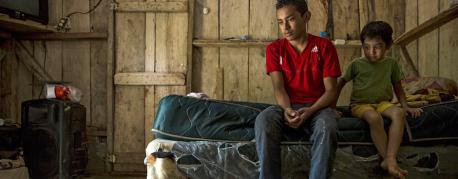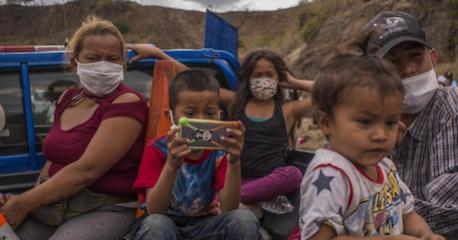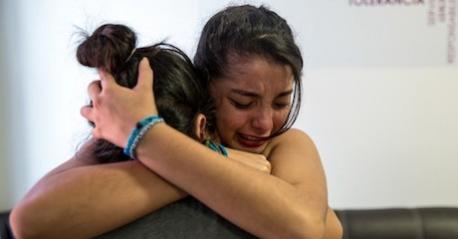
Central American Child Migrants
UNICEF’s interventions include interrupting violence in Central America, providing psychosocial support to children in transit, promoting alternatives to immigration detention in destination countries and working to safely reintegrate children back in to their communities if they are returned.
How UNICEF is helping children fleeing violence and poverty
Fleeing extreme gang violence and intimidation and crushing poverty, many Central American families and children are making the difficult decision to leave the homes they love in search of safety and a better life. Most come from the countries of Honduras, El Salvador and Guatemala. Along the way to Mexico and the United States, they risk being kidnapped, trafficked, raped or killed. But many of these migrating families report that their choice is to flee or to die.
The trend, detailed in the UNICEF-UNHCR joint report Families on the Run, shows no sign of letting up. Families and children continued to migrate even during the COVID-19 pandemic.
Hundreds of thousands of people have been expelled from the U.S. to northern Central America and Mexico in recent years, including thousands of unaccompanied children. Many of these kids are sent back without a best interest assessment, or consideration of family reunification claims. The often abrupt nature of the return leaves little time for reintegration assistance, heightening the protection and health risks in their countries of origin.
“Millions of children in the region are victims of poverty, indifference, violence, forced migration and the fear of deportation," said María Cristina Perceval, UNICEF Regional Director for Latin America and the Caribbean. "In many cases, children who are sent back to their countries have no home to return to, end up deep in debt or are targeted by gangs. Being returned to impossible situations makes it more likely they will migrate again."
Despite all obstacles, the flow of migration continues: Families fleeing violence and poverty at home continue to make what is for most a traumatic and futile trek to the U.S. border.
UNICEF works with partners to support and protect child migrants — while addressing root causes of migration
UNICEF’s multi-pronged intervention strategy works to protect children in their counties of origin, while in transit, at their destination and upon return. Given UNICEF’s long-standing presence in Central America and Mexico, the organization has strong relationships with federal and local government actors, as well as other partners on the ground.
UNICEF’s interventions include interrupting violence in Central America, providing psychosocial support to children in transit, promoting alternatives to immigration detention in destination countries and working to safely reintegrate children back in to their communities if they are returned.
UNICEF also works with governments in Central America and Mexico to address the root causes of migration. Poverty, violence, crime and lack of education and opportunity are all forces that drive children and their families to flee.
Learn more about how UNICEF helps refugee and migrant children globally.

